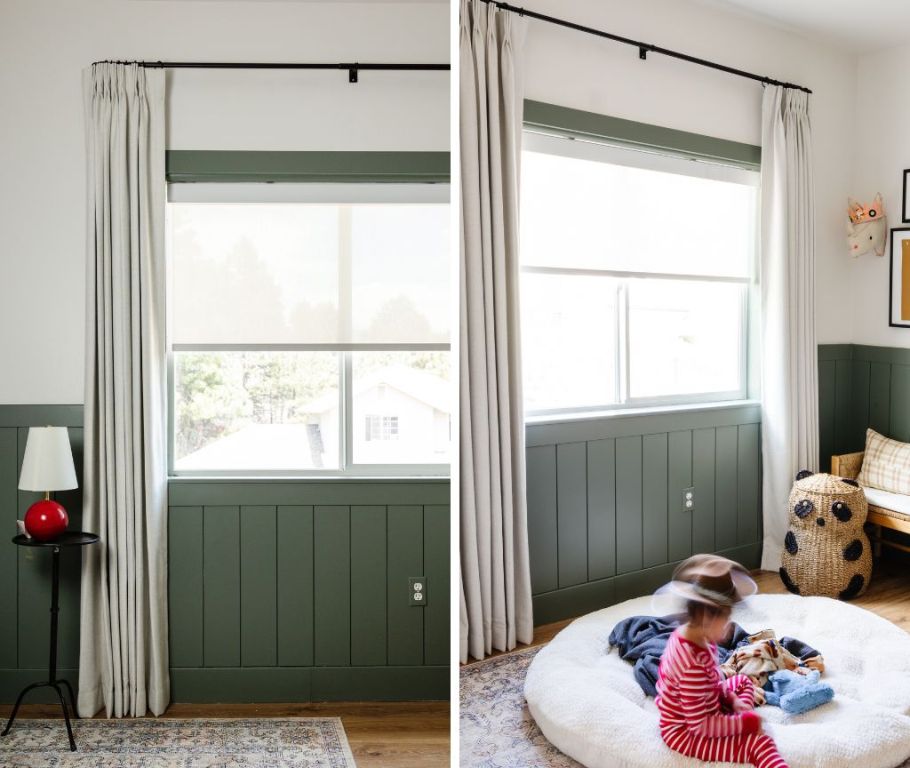
Maintaining and Cleaning Your Custom Window Coverings
Investing in custom window treatments is a decision that pays dividends in both the beauty and functionality of your home. These coverings do more than just enhance the aesthetic appeal; they provide essential control over light, contribute to energy efficiency, and ensure privacy. To maintain their pristine condition and effectiveness, it's important to understand the care they require.
Adhering to proper cleaning techniques and establishing a regular care schedule are key to preserving the appearance and functionality of your shades, blinds, and other window treatments. This not only protects your investment but also ensures that your living space continues to benefit from the added comfort and style that these custom treatments provide.
How Often to Clean Different Types Of Window Coverings
Clean window coverings 1-2 times per year for a lightly used room, more often for high-traffic areas. The frequency of cleaning window treatments depends on the type of covering and the room's environment.
For instance, coverings in the kitchen, especially those designed as easy to clean kitchen window coverings, may require more frequent cleaning due to exposure to cooking fumes and grease. Generally, light dusting every few months is sufficient for most types, but deeper cleaning should be done at least once a year. Washable cellular shades, known for their durability and ease of maintenance, can be cleaned more frequently without damage.

Equipment Needed to Clean Your Window Treatments
Having the right tools can make cleaning delicate window coverings quick, safe and effective. Before using any cleaning solution, always check the manufacturer's recommendations for your specific shades, blinds or curtains. Harsh chemicals could lead to damage.
Generally, most custom window cleaning only requires a soft brush, microfiber lint-free cloth, vacuum with specialized brush attachment, and distilled water mixed with a couple drops of gentle dish or laundry soap if needed. The soft brush helps loosen surface debris and dust before vacuuming up particles. The microfiber cloth, when slightly damp, then can wipe away any remaining dirt without rough scrubbing that could harm fabrics.
Some specialty blinds with metal components may occasionally need ultrasonic blind cleaner machines for a deeper clean, but frequent dust removal usually prevents the need.
Easy to Clean Window Coverings
When it comes to easy clean window coverings, materials and design play a significant role. Faux wood blinds and vinyl roller shades are among the best window coverings for cleaning. Clean up nicely with just water and a cloth. Look for durable, moisture-resistant materials if maintenance is a top concern. Aluminum blinds and some blackout curtains also resist dirt well. For kitchens, select these low-maintenance products.

How to Clean Custom Window Coverings
Cleaning window coverings varies significantly based on the fabric and material details. It's crucial to first identify the material—be it delicate fabrics, sturdy synthetics, natural wood, or faux wood—as this determines the appropriate cleaning method.

Additionally, for any type of covering, vacuuming with a brush attachment can be an effective way to remove dust and dirt without stressing the fabric or material. It's also important to check for any specific instructions provided by the manufacturer or installer, as custom window treatments cleaning might have unique requirements or sensitivities.
Roller Shades
Roller shades, known for their sleek design, can be easily maintained. Dust them regularly with a soft cloth or a duster. For deeper cleaning, a damp cloth with mild soap can be used. Avoid harsh chemicals that can damage the fabric or mechanism.
Roman Shades
Roman shades add elegance to any room but require careful cleaning. Vacuum them gently using the brush attachment to remove dust. For stains, spot clean with a mild detergent, being careful not to soak the fabric. Professional cleaning is recommended for deep stains, and if there are any operational issues, consider consulting a professional for window coverings repair clean to maintain their quality.
Blinds made of natural wood
Natural wood blinds require gentle care. Regular dusting with a soft cloth or a feather duster is essential. For deeper cleaning, use a slightly damp cloth, but avoid excessive moisture that can warp or damage the wood. Special wood cleaners can also be used for better results.
Blinds made of faux wood
Faux wood blinds offer the beauty of wood with easier maintenance. They can be dusted with a soft cloth and cleaned with a mild soap solution. They are more resistant to moisture, making them easier to clean than their natural counterparts.
Maintaining Custom Window Coverings
Handle window treatments gently whenever cleaning, raising or lowering. Make sure lift cords and wands operate smoothly. Correct any issues promptly to maintain function and appearance. Keep furry pets away from tempting dangling cords. Place furnishings to prevent unnecessary rubbing against shades or blinds. It's also important to consider the initial window coverings installation and cleaning process, as proper installation can significantly reduce future maintenance issues.
With regular conscientious care, your custom window treatments will maintain visual appeal and optimal performance for years.
In conclusion, maintaining and cleaning your window coverings is a crucial aspect of home care. Whether it’s routine dusting or a thorough wash, proper maintenance ensures your window treatments continue to add beauty and function to your home. Remember, the key to effective window covering care is regularity and using the right techniques for each type.





